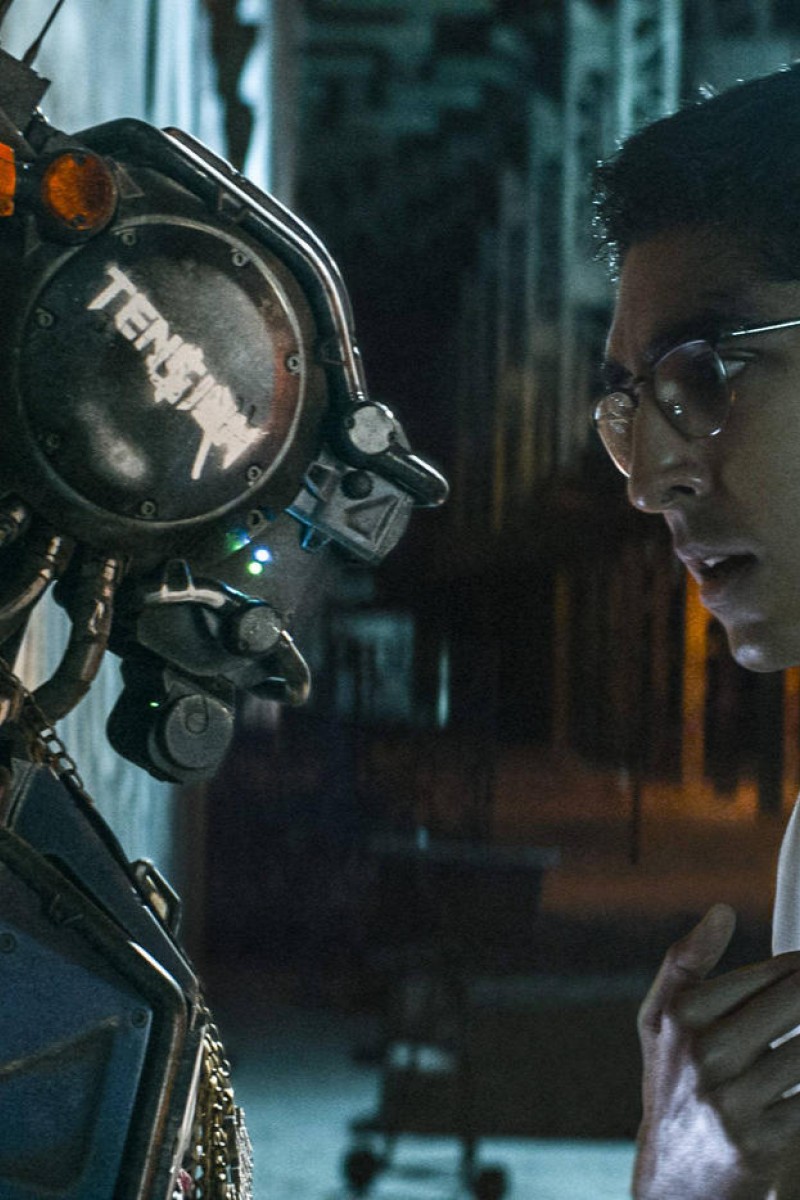
Sci-fi film Chappie examines the power of humanity
District 9 director Neil Blomkamp talks to Young Post about his new film and the idea that humans would be less violent creatures without consciousness
 Chappie and his maker (Dev Patel) represent the pain and suffering that humans are capable of, but also the goodness.
Chappie and his maker (Dev Patel) represent the pain and suffering that humans are capable of, but also the goodness.With stories of wars and frequent terrorist attacks around the world appearing in the news every day, it's pretty reasonable to say that the world is a dangerous place. No one agrees more than director Neil Blomkamp (District 9, Elysium), who explores the theme of humanity in his latest action sci-fi film, Chappie.
"Violence can happen to anyone at any moment," the 35-year-old South African animator-turned-director says on the phone to Young Post. "When you have something as pure and beautiful as consciousness, [it] is snuffed out by some kind of atrocious act of violence. It's a very disturbing concept."
Chappie (voiced by Sharlto Copley) is the first robot that can think and feel for itself. Created by science prodigy Deon Wilson (Dev Petal), Chappie is raised by two gangster parents (Yolandi Visser and Ninja of South African rap-rave group Die Antwoord), who want to use him to get rich. Meanwhile, military man Vincent Moore (Hugh Jackman) has destructive plans for his own human-controlled killing machine named Moose.
Blomkamp's idea was to take something as unhuman as a robot and give it complete human characteristics. "Although humans are the ones that create all of the pain and suffering, they are also capable of everything that is good. To me, Chappie is an analogy to a human which has not yet been corrupted," he says.
Chappie appears courtesy of CG, but to make Chappie as "human" as possible, Copley actually acted alongside the other characters as scenes were filmed. This was essential to make the robot's movements seem authentic, and also helped other actors better relate to it. Copley wore a shoulder and chest plate to give him the same dimensions as Chappie. This allowed him to work out where he could physically fit, and how he would sit or stand. It also made it easier for other actors to know where to stand, turn or put their hands.
Since Chappie is a gangster, Copley wore clothes that got him into character. "During the gangster scenes I would loosen my belt and drop my shorts halfway down my backside. That was my trick … It helped create the right kind of gangster movements," he says.
Having starred in Blomkamp's two previous feature films, Copley was perhaps a natural cast member, but he wasn't the only one the director settled on in advance: Blomkamp knew he wanted Die Antwoord he sees them as a South African cultural phenomenon.
As the pair are new to acting, he kept their real names in the film, and let them be themselves as much as possible. He even let them choose the colour of their guns - neon pink and yellow - and designed their den based on their music videos.
"I feel like they make the film. I feel like they give it a coolness, a weirdness and a uniqueness you'd never have had without them," he says.